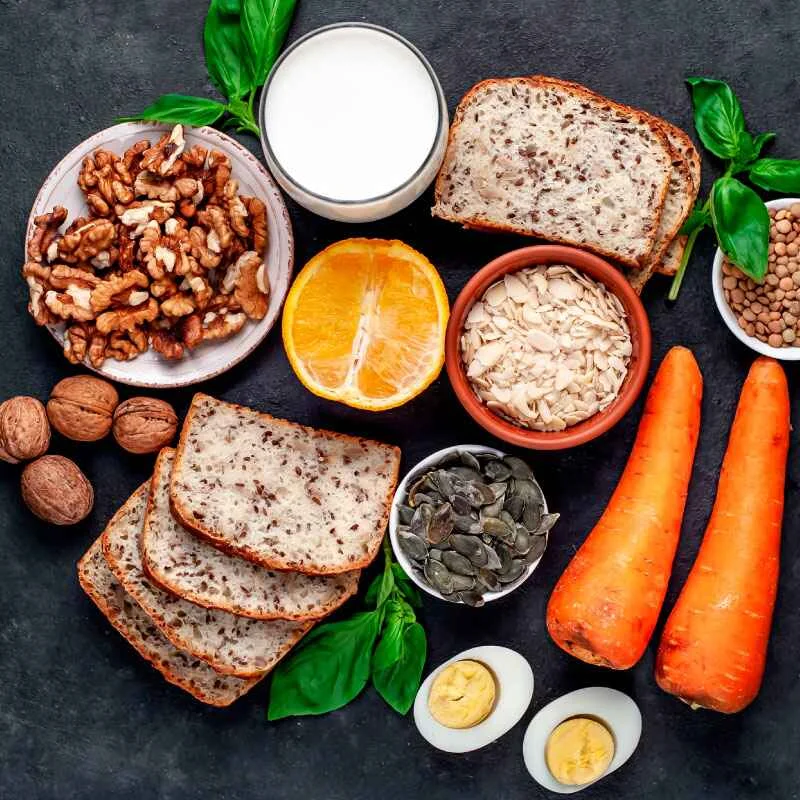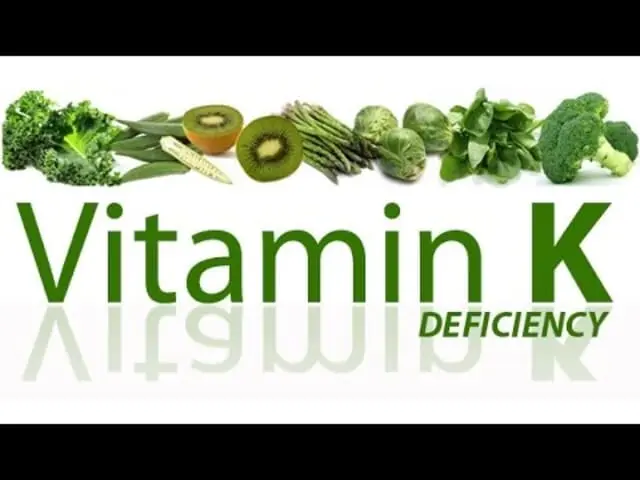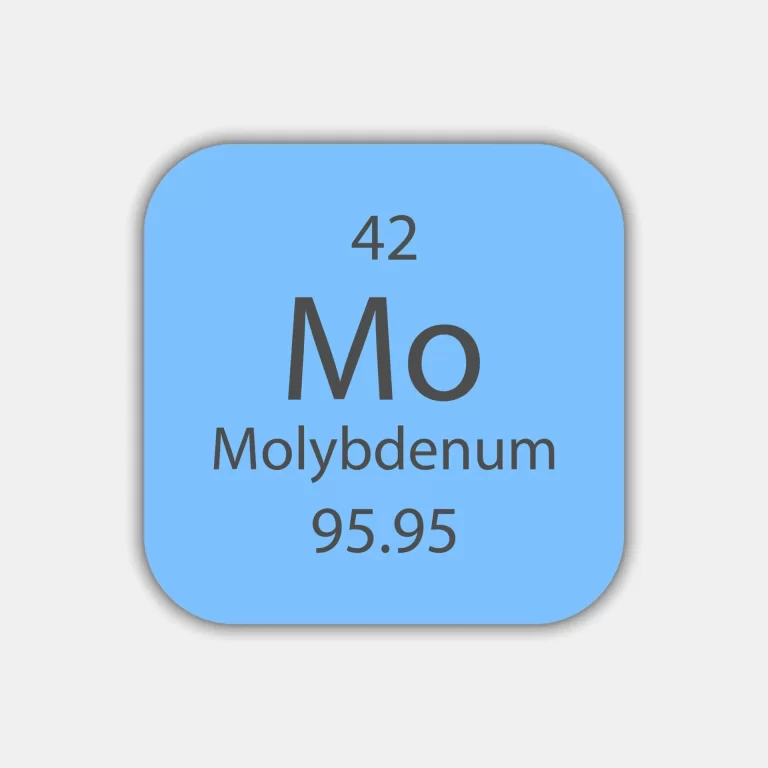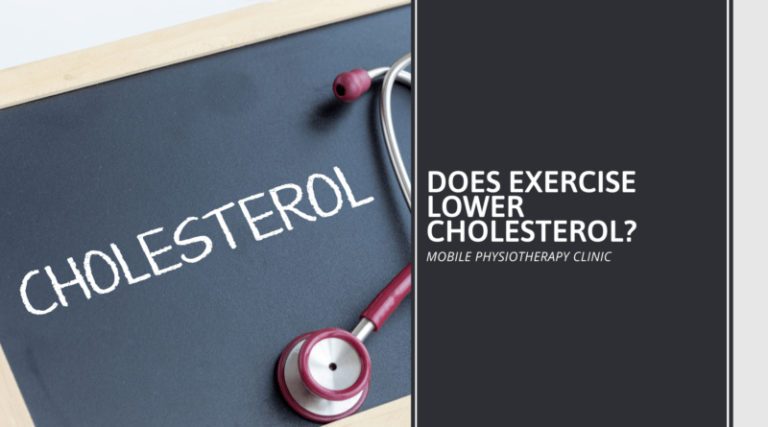Which Foods are the Best for Vitamin B1
Introduction
Vitamin B1, also known as thiamine, is a crucial nutrient that plays a key role in energy metabolism, nerve function, and the metabolism of carbohydrates. It is water-soluble and cannot be stored in the body for an extended period, making regular dietary intake essential.
Foods rich in vitamin B1 include whole grains, fortified cereals, lean meats, legumes, nuts, seeds, and certain vegetables. Incorporating a diverse range of these foods into your diet can help ensure an adequate intake of vitamin B1 and support overall health.
B1 vitamin is an important nutrient. This means the body cannot create it and humans must get it from their diet. It is a water-soluble vitamin, just like vitamin C and all the other B vitamins.
For adults 19 years of age and older in the United States, the suggested Dietary Allowance (RDA) for vitamin B1 is 1.2 mg for males and 1.1 mg for females. The RDA rises to 1.4 mg during pregnancy and breastfeeding.
Certain foods naturally contain a lot of vitamin B1.
Individual vitamins within the B-vitamin group work together to use health-promoting effects such as energy production. For this purpose, a lot of these foods high in vitamin B1 also contain other nutrients as well as the B vitamins.
Thiamin – Vitamin B1
Water-soluble vitamin B1 also referred to as thiamin (thiamine), is available as a supplement and happens naturally in certain foods. It could also be added to food. Thiamin is essential for the development and operation of different types of cells. Only small amounts are stored in the liver, so a daily intake of thiamin-rich foods is required.
The symptoms of thiamin deficiency were initially noted in ancient Chinese medical texts, but it wasn’t until the late 19th century that they became related to diet. A Japanese doctor observed in 1884 that Japanese sailors who used a restricted diet of only rice for months at sea had very high rates of sickness and mortality rates.
The rates of disease and mortality almost disappeared when the diet was modified by including more whole grains, meats, beans, and vegetables. At about the same time, two Dutch scientists noticed that while chickens fed brown not polished rice did not develop leg paralysis, those fed white polished rice did. At about the same time, two Dutch scientists noticed that while chickens fed brown not polished rice did not develop leg paralysis, those fed white polished rice did. Thiamin is present in the outer layers of rice that were polished off as a result of their observations.
Foods
About half of the vitamin B1 intake in Americans is obtained from naturally occurring thiamin-containing foods, with the remainder coming from foods that have been defended with the vitamin by manufacturers.
The foods listed below contain vitamin B1.
Proteins
Some sources of protein that contain vitamin B1 involve:
- Pork.
- Salmon.
- Black beans.
- Mussels.
- Brown rice.
- Sunflower seeds.
- Green peas
- Pecans.
- Eggs.
- Trout.
Fruits and vegetables
Fruits and vegetables that contain vitamin B1 involve:
- Cauliflower.
- Oranges.
- Potatoes.
- Asparagus.
- Kale.
- Grains.
Pork
- There are 0.565 mg of vitamin B1 in 100 grams (g) of broiled or baked pork chop.
- In addition, a pork chop contains a variety of vitamins and minerals, involve vitamin B2 (riboflavin), vitamin B3 (niacin), vitamin B6 (pyridoxine), folate (vitamin B9), and vitamin B12 (cobalamin). Calcium, iron, magnesium, potassium, zinc, and selenium are among the essential minerals.
Salmon
- The amount of vitamin B1 in 100 grams of cooked wild Atlantic salmon is 0.275 mg.
- A variety of vital minerals, including calcium, iron, magnesium, potassium, zinc, and selenium, are also found in salmon, along with all of the B vitamins, vitamin A, and essential fatty acids.
Black beans
- Black beans in cans provide 0.196 mg of vitamin B1 per 100 g serving.
- Moreover, vitamin B2, vitamin B3, vitamin B6, folate, vitamin C, vitamin E, and vitamin K (phylloquinone) can be identified in canned black beans.
- They also provide calcium, iron, magnesium, potassium, zinc, and selenium, among other essential minerals.
Mussels
- The amount of vitamin B1 in 100 grams of steamed mussels is 0.303 mg.
- Steamed mussels also give vitamin C, vitamin B2, vitamin B3, folate, vitamin B12, vitamin A, vitamin E, and vitamin K, along with the essential minerals calcium, iron, magnesium, potassium, zinc, and selenium.
Brown rice
- Cooked brown rice provides 0.177 mg of vitamin B1 per 100 g serving.
- In addition to folate, cooked brown rice is a good source of vitamins B2, B3, B6, E, and K. It gives the essential minerals calcium, iron, magnesium, phosphorus, potassium, sodium, zinc, copper, and selenium.
Sunflower seeds
- Sunflower seeds have a vitamin B1 content of 0.106 mg per 100 g.
- Unsalted sunflower seeds also contain a range of other essential nutrients, involve vitamins B2, B3, B6, C, E, and K; folate; and beta carotene.
- These include zinc, sodium, potassium, phosphorus, iron, magnesium, calcium, copper, and selenium are also present in them.
Green peas
- When cooked from frozen, 100 g of green peas provide 0.282 mg of vitamin B1.
- In addition to vitamins B2, B3, B6, C, E, and K, cooked frozen green peas also include beta-carotene and folate. Beta-carotene could be converted by the body into vitamin A.
- Green peas give the essential minerals calcium, iron, magnesium, phosphorus, potassium, sodium, zinc, copper, and selenium.
Pecans
- Vitamin B1 is present in 0.64 mg of unsalted pecans per 100 grams.
- A variety of other nutrients are also present in pecans, such as beta carotene, folate, and the vitamins B2, B3, B6, C, E, and K.
- Additionally, pecans give the essential minerals calcium, magnesium, iron, phosphorus, potassium, zinc, copper, and selenium.
Grains
Grain options that contain vitamin B1 involve:
- the outer layers and germ of cereals.
- whole grains.
- pulses.
- cereals for breakfast increased with B1.
- goods created from white rice or enriched white flour.
The NIH notes that one serving of fortified breakfast cereal gives 1.2 mg of thiamin, which meets the daily suggestion of thiamin for most adults.
The quantity of thiamin present in brown rice is ten times higher than in unenriched white rice.
The eight percent, or 0.1 mg, of the daily requirement, can be found in one slice of whole wheat bread.
Cooking
Foods that are heated, cooked, processed, or boiled in water lose their thiamin. Cooking water contains dissolved vitamin B1, due to its water-soluble nature.
Because the body cannot store vitamin B1, humans need a constant supply of it. It needs to be part of a person’s regular diet.
What foods contain thiamine?
The best foods to have in your diet that are high in thiamine are provided below:
- Two tablespoons of nutritional yeast have 9.6 mg (640 percent DV*).
- Spirulina and other seaweeds: 1 cup of seaweed gives 2.66 mg (216 percent DV*).
- Black beans: 0.58 mg (48 percent DV*) per 1/3 cup dried or around 1 cup cooked.
- Lentils: 0.53 mg (44 percent DV*) from 1/3 cup dried or around 1 cup cooked.
- Organic soybeans and edamame: 1/3 cup cooked or dried; 0.53 mg (44 percent DV*).
- Navy beans: 0.53 mg (44 percent DV*) in 1/3 cup dried beans, or around 1 cup cooked.
- White beans: 0.53 mg (44 percent DV*) from 1/3 cup dried or about 1 cup cooked.
- Green split peas: 1/3 cup dry, or about 1 cup cooked, equals 0.48 milliliters (or 40% of the Daily Value).
- Pinto beans: 0.46 mg (39 percent DV*) in 1/3 cup dried or around 1 cup cooked.
- Mung beans: 0.42 mg (36 percent DV*) in 1/3 cup dried or about 1 cup cooked.
- Macadamia nuts: 0.33 mg (or 27% DV*) per ounce.
- One ounce of sunflower seeds gives 0.33 mg (27 percent DV*).
- Beef liver: 0.32 mg (26 percent DV*) per 3 oz cooked piece.
- Asparagus: 0.31 mg (25 percent DV*) per cup cooked.
- One cup of cooked Brussels sprouts: 0.16 mg (13 percent DV*).
- *Daily Value: Percentages are determined using a 2,000-calorie diet as the basis.
Other foods high in thiamine involve rice bran, wheat germ, oranges, dairy products like yogurt or cheese, sun-dried tomatoes, potatoes, sesame seeds, spinach, and organ meats.
Recommended Daily Intake
How much thiamine/vitamin B1 do you require per day?
Thiamine may be contained in most foods. The suggested daily intake for thiamine is as follows:
- From birth to six months: 0.2 mg.
- 7 to 12 months: 0.3 mg.
- 0.5 mg for 1-3 years.
- 0.6 mg for 4–8 years.
- 9–13 years old: 0.9 mg.
- 1.2 mg for men, 1.0 mg for women, and 1.4 mg for lactating or pregnant women between 14 to 18.
- 19–50 years old: 1.2 mg for men, 1.1 mg for women, and 1.4 mg for feeding or pregnant women.
- Males aged 51 and older people: 1.2 mg; females: 1.1 mg.
Another put, 1.1 milligrams for women and 1.2 milligrams for men each day. Breastfeeding and pregnant women require more, about 1.4–1.5 milligrams per day.
The suggested daily dosage of thiamine for adults with low levels is five to thirty milligrams, provided either as a single dose or in divided doses over one month. The amount that you require depends on your sex, age, and level of activity. Factors like stress, exercise, illness, and pregnancy all raise your requirement for thiamine foods.
What are the symptoms of low vitamin B1?
Deficiency in vitamin B1 may occur in the following symptoms:
- weight loss.
- confusion.
- short-term memory loss.
- an enlarged heart.
- muscle weakness
What foods are high in vitamin B1?
Food sources for thiamin involve:
- cereals fortified with vitamin B1.
- pork.
- fish, involve trout, tuna, and mussels.
- black beans.
- whole grains.
Why You Need Vitamin B1
Vitamin B1, referred to as thiamine, is essential to your health.
The daily amount of thiamin you require depends on your age and sex, but it is suggested that adult men get 1.2 mg and women get 1.1 mg. Various foods and supplements can give your daily value of thiamine.
Vitamin B1 supports your body function in many different methods, including:
Metabolism
Thiamine assists in turning carbohydrates into energy. It is needed for the metabolism of glucose, amino acids, and lipids.
Pregnancy
Thiamine is suggested for people with low levels of thiamine, including those with thiamine deficiency syndromes and pregnant women.
Additionally, vitamin B1 is necessary for the development of a baby’s brain as they remain in the womb.
Memory
Long-term alcohol consumption may result in thiamine deficiency, which can lead to memory loss and brain damage. To treat such conditions, medical professionals apply thiamine.
Benefits
Increase the Metabolism and Higher Energy Levels
Thiamine is used to assist in extracting energy from the foods you eat by turning nutrients into usable energy in the form of “ATP.” Foods with thiamine assist in converting molecules found in proteins and carbohydrates so that the body can use these macronutrients to carry out a variety of tasks.
The enzymatic form of thiamine is included in two main types of metabolic reactions within the body that support carbohydrate and fat metabolism: decarboxylation and transmetalation. Thiamine also plays an important role in the creation of red blood cells, which are used for ongoing energy.
You’ll frequently find B vitamin complex supplements marketed as “energy boosting” or “healthy metabolism” products because thiamine and other B vitamins naturally increase energy and are required for the body to synthesize ATP from food. Ingesting thiamine in supplement form is also sometimes given to patients to assist in correcting metabolic disorders associated with genetic diseases.
Protect Eye Health and Vision
Studies reveal that foods with thiamine assist in preventing cataracts by working together with omega-3 and omega-6 fats to help eye health. Additionally, thiamine can aid in preventing vision loss created by ocular nerve swelling. This is also because it has the power to affect the signaling of muscles and nerves, which is crucial for information transfer from the eyes to the brain.
You should also consider adding more vitamin A foods into your diet to help your vision.
Promote Neurological Health
Eating foods high in thiamine is a natural method to promote healthy cognitive health. Memory loss, dementia, and Alzheimer’s disease can all be exacerbated by thiamine deficiency. This is particularly prevalent in alcoholics who experience severe B vitamin loss as a result of nutritional deficiencies and dehydration.
In older adults with Alzheimer’s disease, thiamine levels in the blood are usually lower than in the general population. However, at this point, the exact connection connecting thiamine levels and the development of Alzheimer’s disease is still unclear. Studies are underway to apply thiamine supplementation to prevent Alzheimer’s from developing.
Other than that, thiamine is a crucial vitamin that helps with energy, and focus, and avoids chronic stress and memory loss. Research has connected deficiency in thiamine to difficulties in learning and remembering knowledge. According to one study conducted in the United Kingdom, thiamine gave test-takers rapid responses and a clear-headed feeling.
Support the Cardiovascular System
To control important functions of the endocrine, digestive, and cardiovascular systems, thiamine is combined with other B vitamins, including vitamins B6 and B12. Studies indicate that foods containing thiamine have a positive impact on circulation and functions of the heart, and higher intake has been shown to help cardiac function, urine output, lose weight as well as heart failure symptoms and signs.
Vitamin B1/thiamine may also support avoiding heart problems, such as an enlarged heart, high pulse rate, edema, inflammation, and muscle wasting (remember the heart is a muscle).
Prevent Muscle Weakness, Spasms and Soreness
Low thiamine intake is related to limb numbness/tingling, fluid retention, soreness, weakness, and tenderness, as well as restless leg syndrome.
Thiamine is especially helpful for preventing these symptoms in people with health conditions like diabetes, since it supports nerve function and protects nerves’ outer coating called the myelin sheath. Vitamin B1 can also assist in improving recovery time after exercise and support the reduction of lactic acid, which causes soreness.
Help Promote Gut and Digestive Health
In people with thiamine deficiency, consuming more thiamine may support improved appetite and strengthen their digestive systems. In animal studies, treating animals eating a low-calorie diet (similar to humans eating a calorie-restricted diet due to dieting or an eating disorder) assists in improving appetite and recovery.
A lack of energy, anxiety, and depression can also all contribute to poor appetite, low moods, and lack of motivation, but thiamine may prevent these symptoms by supporting the body’s capacity to tolerate stress, both mental and physical.
Boosts Immunity
As just detailed, thiamine assists in maintaining the muscle tone along the walls of the digestive tract, where much of the immune system is located. Because a healthy digestive tract assists your body in better-absorbing nutrients from food, which are then used to strengthen immunity and prevent illness, digestive health is important for thiamine absorption.
Thiamine assists in the secretion of hydrochloric acid, which is essential for the complete digestion of food particles and absorption of nutrients.
Helps Prevent Nerve Damage
Without enough “fuel” from our diets going toward the function of our nervous system, we can experience nerve damage that can result in problems moving, learning, and remembering information. Thiamine is required to convert carbohydrates from our food, and the main role of carbohydrates is to provide energy for the body, especially for the brain and nervous system.
Thiamine is specifically required for a system of enzyme reactions called pyruvate dehydrogenase, which works to oxidize sugars that we eat. Thiamine also supports with proper development of myelin sheaths, which wrap around nerves to protect them from damage and death.
Helps Keep a Positive Mood
Thiamine-rich foods are also mood-boosting, as this vitamin helps the body’s ability to withstand stress. It’s also the reason behind the term “anti-stress” for B vitamins. A lack of energy can lead to a poor mood and motivation. Thiamine is required to boost your mood and defend against depression and anxiety because of its positive effects on the brain.
It can ward off inflammation and assist in maintaining healthy brain function that is responsible for decision-making in the brain. Maintaining good nerve function is essential for reducing stress and anxiety as well as improving your mood.
Helps Treat Alcoholism
Thiamine support reduces the risk of developing a specific brain disorder called Wernicke-Korsakoff syndrome(WKS). WKS symptoms involve involuntary muscle movement, nerve damage, lethargy, and problem walking. This brain disease, which is related to low thiamine levels, occurs frequently in alcoholics, particularly those with poor dietary habits. Taking in alcohol interferes with the body’s capacity to absorb thiamine from food.
The percentage of alcoholics who are thiamine deficient is thought to range from 30% to 80%. High doses of thiamine have been shown to assist in reducing symptoms of alcohol withdrawal.
Enriched vitamin B1 foods
Some foods high in vitamin B1 are so because of enrichment, not given that they are naturally high in nutrients. White rice and breakfast cereals are two examples of these foods.
When compared to white rice, brown rice has a naturally higher vitamin B1 content. The National Institutes of Health (NIH) declares that non-enriched white rice has only a tenth of the vitamin B1 that non-enriched brown rice produces. Food producers frequently add vitamin B1 to white rice.
Why is vitamin B1 important?
In the form of thiamine diphosphate (TDP), an adult’s body includes approximately eighty percent of the vitamin B1. This form of vitamin B1 gives essential support to five enzymes — stimulators of chemical reactions in the body — required to metabolize carbohydrates, protein, and fat.
Vitamin B1 plays an essential role in energy metabolism and therefore is critical to the growth, development, and function of cells.
The liver is where the body stores vitamin B1, but only in small quantities (25–30 mg). Vitamin B1 stays in the body for only a short time, so humans are required to take in a continuous supply of it from food and, in some cases, from supplements.
Final Thoughts
- Thiamine, also known as vitamin B1, is a water-soluble vitamin that’s developed in many plant and animal-derived foods.
- Thiamine foods involve nutritional yeast, sea vegetables, certain whole grains, green veggies like asparagus and peas, seeds, beans, and fish.
- The benefits of eating thiamine-rich foods involve supporting the metabolism, raising energy levels, protecting the heart, supporting neurological health, and protecting the eyes/vision.
- People who need a higher intake of thiamine and can benefit from eating more foods with thiamine include alcoholics, people eating low-calorie diets, diabetics, pregnant or breastfeeding women, the elderly, as well as people who suffer from liver disease, HIV, anemia, or inflammatory bowel disease.
- Most people don’t require a thiamine supplement to get enough, and because it’s water-soluble there isn’t much risk included with consuming too much thiamine.
Summary
Vitamin B1, also known as thiamine, is an essential nutrient, meaning that humans are required to get it from their diet to maintain good health.
Certain foods, such as brown rice and pork, naturally contain a lot of vitamin B1. Food producers add vitamin B1 to other foods, like breakfast cereals and white rice.
This nutrient is needed for the metabolism of energy, which in turn affects cell growth, development, and function.
FAQs
What food is highest in B1?
Some foods, such as brown rice and pork, include a lot of vitamin B1. Food developers add vitamin B1 to other suppers, like breakfast cereals and white rice. This nutrient is required for the metabolism of energy, which in turn promotes cell growth, development, and function.
Which fruit is best for vitamin B1?
Oranges, clementines, and lemons are examples of citrus fruits that complete at least six of the eight B vitamin needs. They involve B1) Thiamin.
What foods are high in vitamin B1?
cereals with increased vitamin B1.
pork.
fish, involve trout, tuna, and mussels.
black beans.
whole grains.
Which veg food has vitamin B1?
Colocasia leaves, capsicum, tomatoes, peas, almonds, groundnuts, pistachios, walnuts, rajma, soybean, chickpeas, moong, mati, whole urad, and sunflower seeds are only a few of the various vegetarian foods that provide vitamin B1. You may raise your diet’s intake of Vitamin B1 by having eggs.
How can I get B1 naturally?
Food Supply
Fortified breakfast cereals.
Pork.
Fish.
Beans, lentils Green peas.
Enriched cereals, bread, noodles,
rice.
Sunflower seeds.
Yogurt.
How Does Vitamin B1 Promote Good Health?
Boosts energy production. Sugar and vitamin B1 combine to produce energy that your body can use. Decrease the effects of sepsis. Decreased levels of vitamin B1 may cause sepsis, a severe reaction to an infection that can be fatal. Support fight depression and is Good for diabetes.
Are bananas high in B1?
Here are the vitamins and minerals you’re getting when you eat one medium-sized banana, along with the percentage of your suggested intake: Vitamin C, 11% Vitamin E, 1% Vitamin B1 (Thiamine), 3%.
Is milk a good way to get vitamin B1?
Thiamin, also known as vitamin B1, is developed in most types of food. Good sources involve pork, vegetables, milk, cheese, peas, fresh and dried fruit, eggs, wholegrain bread, and some fortified breakfast cereals.
What foods cause B1 deficiency?
A diet heavy in white flour, white sugar, and other highly processed carbohydrates can result in thiamin deficiency. People initially have mild symptoms involving exhaustion and anxiety, but a severe deficiency, known as beriberi, may affect the heart, brain, muscles, and nerves.
Is carrot rich in vitamin B1?
Carrots are also a source of vitamin B1, but they contain about 0.03 mg of Vitamin B1 in 100 g of carrot. Apples do not contain vitamin B1. Another good source of vitamin B1 is corn. About 7% of vitamin B1 is present in it.
Do almonds have B1?
Nutrient-dense almonds support your health and improve your immune system. Vitamin B1, referred to as thiamine, is abundant in almonds and is necessary for the metabolism of carbohydrates, proteins, and fats.
Is milk good for vitamin B1?
every 100 grams. It is concluded that similar to cow’s milk, there is a maximum level above which the vitamin content cannot be raised, not even by large doses of thiamin chloride. However, the level of vitamin B1 in human milk is controlled in the lower brackets by the vitamin B1 content of the diet.
How to increase vitamin B1?
Eating a diet rich in thiamine-containing foods can assist in maintaining adequate thiamine stores in the body. Some common sources of dietary thiamine involve the following: enriched white rice, 1 cup (186 grams) cooked: 0.3 mg. One cup (160 grams) of cooked enriched egg noodles: 0.5 mg.
Are eggs high in B1?
The egg yolk contains a high amount of vitamins A, D, E, K, B1, B2, B5, B6, B9, and B12, while egg white
possesses a high quantity of vitamins B2, B3, and B5 but also significant quantity of vitamins B1, B6, B8, B9, and B12. Eating two eggs per day covers 10% to 30% of the vitamin need for humans.
What destroys vitamin B1?
Foods that are heated, cooked, processed, or boiled in water dissolve their thiamin. Cooking water contains dissolved vitamin B1, due to its water-soluble nature.
What prevents vitamin B1?
Although the perception that thiamine deficiencies are not common in our refined Western diet, which is heavy in sugar, caffeine, and sometimes alcohol, may cause one. The chance of deficiency rises when common drugs like Lasix, metformin, and Pepcid are advised.
References
- Thiamin – Vitamin B1. (2023, March 7). The Nutrition Source. https://www.hsph.harvard.edu/nutritionsource/vitamin-b1/.
- Hellicar, L. (2022, July 28). Which foods are the best for vitamin B1? https://www.medicalnewstoday.com/articles/vitamin-b1-foods#salmon.
- Brazier, Y. (2023, November 13). What to know about thiamin (vitamin B1). https://www.medicalnewstoday.com/articles/219545.
- High Thiamine (B1) Foods. (2020, October 30). WebMD. https://www.webmd.com/diet/high-thiamine-b1-foods.
- Thiamine (Vitamin B1) Foods, Benefits and Recommended Intake – Dr. Axe. (2023, August 28). Dr. Axe. https://draxe.com/nutrition/thiamine-foods/.







